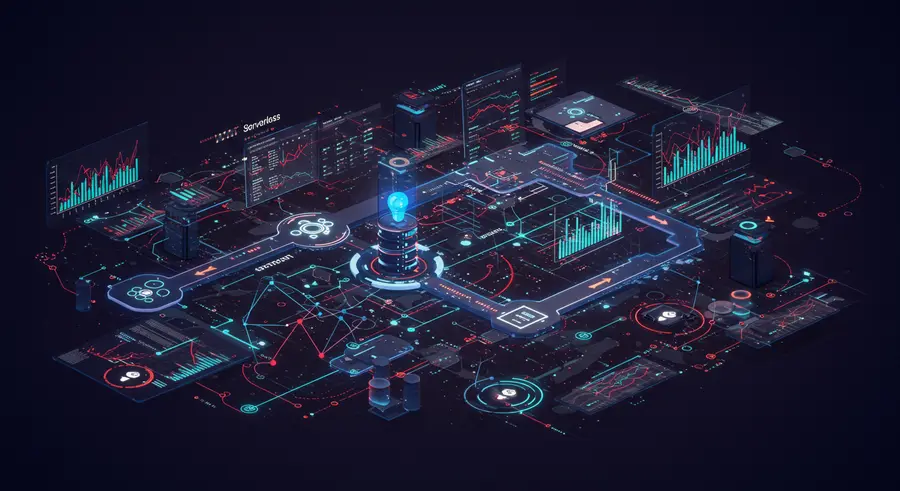Troubleshooting and Debugging Serverless Applications

Serverless architectures, while offering immense benefits in scalability and cost-efficiency, introduce unique challenges when it comes to troubleshooting and debugging. The ephemeral nature of functions, distributed components, and lack of persistent servers mean traditional debugging methods often fall short. This article explores common issues and provides strategies and tools for effectively diagnosing and resolving problems in your serverless applications.
Common Serverless Challenges
Before diving into solutions, it's crucial to understand the typical pitfalls:
- Cold Starts: The delay experienced when a function is invoked after a period of inactivity. While not an error, it impacts performance.
- Timeouts: Functions exceeding their configured execution limit, leading to failures.
- Memory Issues: Functions running out of allocated memory, causing crashes or unexpected behavior.
- Configuration Errors: Incorrect environment variables, permissions, or trigger settings.
- Dependency Conflicts: Issues arising from mismatched or missing libraries within the function package.
- Asynchronous Processing Failures: Errors in event-driven flows where upstream services might not be aware of downstream failures.
- Vendor-Specific Quirks: Each cloud provider (AWS, Azure, Google Cloud) has its own nuances and service integrations that can be tricky.
Essential Troubleshooting Strategies
1. Comprehensive Logging
Logging is your first line of defense. Ensure your serverless functions emit detailed logs at appropriate levels (INFO, WARN, ERROR). Use structured logging (e.g., JSON) to make logs easily parsable by analysis tools.
- CloudWatch Logs (AWS): Centralized log management for Lambda.
- Azure Monitor Logs (Azure): For Azure Functions.
- Cloud Logging (Google Cloud): For Google Cloud Functions.
Tip: Avoid excessive logging in production as it can incur costs, but be verbose in development environments.
2. Robust Monitoring and Alerting
Monitoring provides real-time visibility into the health and performance of your functions. Set up alerts for critical metrics.
Key metrics to monitor:
- Invocations: How often your function is called.
- Errors: The number of errors or failed invocations.
- Duration: Execution time of your functions.
- Throttles: When your function invocations are limited by the provider.
- Concurrent Executions: The number of simultaneous function instances.
Tools like AWS CloudWatch, Azure Application Insights, and Google Cloud Monitoring provide these capabilities out-of-the-box. Third-party tools like Datadog, New Relic, and Lumigo offer enhanced serverless-specific monitoring.
For more advanced financial market analysis, consider how platforms like Pomegra leverage real-time data monitoring to detect anomalies and provide actionable insights, much like how monitoring tools help diagnose issues in serverless environments.
3. Distributed Tracing
In a distributed serverless architecture, a single request might traverse multiple functions and services. Distributed tracing helps you visualize the entire flow, identify bottlenecks, and pinpoint exactly where an error occurred.
- AWS X-Ray: Integrated tracing for AWS services.
- Application Insights (Azure): Provides distributed tracing for Azure Functions.
- Cloud Trace (Google Cloud): For Google Cloud Functions.
Tracing allows you to see the latency across different services and quickly isolate problematic components.
4. Local Emulation and Testing
Developing and debugging locally can significantly speed up your iteration cycle. Tools like the Serverless Framework, SAM CLI (AWS), and Azure Functions Core Tools allow you to simulate the cloud environment on your machine.
- Test function logic and integrations before deploying.
- Use breakpoints and step-through debugging in your IDE.
- Mock external services to isolate function behavior.
5. Versioning and Rollbacks
Always version your serverless functions. If a new deployment introduces errors, you can quickly roll back to a previous stable version, minimizing downtime. This is a critical operational practice.
Best Practices for Debugging
- Keep Functions Small and Focused: Smaller functions are easier to test, debug, and understand.
- Idempotency: Design functions to be idempotent, meaning executing them multiple times with the same input yields the same result. This helps with retries and reduces side effects from failed or duplicate invocations.
- Error Handling and Retries: Implement robust error handling within your functions. Configure retry policies for asynchronous invocations and integrations with other services.
- Dead-Letter Queues (DLQs): For asynchronous invocations, use DLQs to capture failed events. This allows you to inspect and reprocess them later, preventing data loss.
- Environment-Specific Configurations: Use environment variables or configuration services (e.g., AWS Systems Manager Parameter Store) to manage different settings for development, staging, and production.
Effective troubleshooting and debugging are crucial skills for any serverless developer. By leveraging comprehensive logging, robust monitoring, distributed tracing, and adopting best practices, you can build and maintain resilient and performant serverless applications with confidence. Remember, the journey into serverless is continuous learning, and mastering these aspects will significantly enhance your development workflow.
For further insights into optimizing complex systems, consider exploring resources on observability in distributed systems or understanding the principles behind Site Reliability Engineering (SRE).